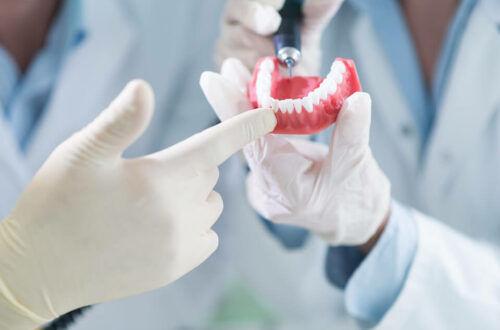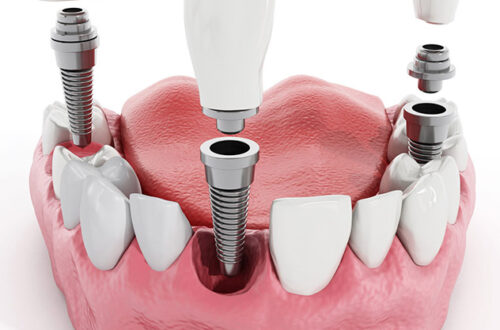From Ancient Techniques to Modern Wellness: Exploring the Fascinating History of Massage
Step into a world of relaxation and rejuvenation as we embark on a journey through time to explore the captivating history of massage. From ancient techniques rooted in tradition to the innovative practices of today, we’ll delve into the origins, evolution, and enduring benefits of this ancient art form. Massage has been an integral part of human culture for centuries, transcending borders and cultures to become a universal language of healing and well-being. With each stroke and knead, masseuses and masseurs have not only eased physical pain but also nurtured emotional and spiritual well-being. Join us as we uncover the secrets behind ancient techniques such as Ayurvedic massage, Chinese Tui Na, and Swedish massage, and discover how they have shaped modern wellness practices. From the hands of ancient healers to the skilled therapists of today, this captivating journey will leave you with a newfound appreciation for the power of touch and an understanding of why massage continues to be a cherished form of therapy for millions around the world.
Ancient massage techniques and their origins
Massage, in various forms, can be traced back to ancient civilizations that recognized the healing power of touch. In ancient Egypt, massage was an integral part of their daily rituals and practices. Egyptians believed that massage had both physical and spiritual benefits, and it was often performed by priests or priestesses. The techniques used in ancient Egyptian massage were influenced by their belief in the connection between the body, mind, and spirit. They believed that by manipulating the body, they could restore balance and promote overall well-being.
In China, massage, known as Tui Na, has roots that date back over 2,000 years. Tui Na is a therapeutic form of massage that focuses on the flow of energy and the balance of yin and yang in the body. It incorporates techniques such as rubbing, pressing, and kneading to stimulate specific acupressure points and meridians. The aim of Tui Na is to restore the body’s natural balance and promote the free flow of energy, known as Qi. This ancient technique is still widely practiced in China and has gained popularity in Western countries as well.
India, the birthplace of Ayurveda, also has a rich history of massage. Ayurvedic massage, known as Abhyanga, has been practiced for thousands of years as part of a holistic approach to health and well-being. In Ayurveda, the body is seen as a temple, and massage is considered an essential part of self-care. Abhyanga uses warm herbal oils and rhythmic strokes to nourish the body, promote relaxation, and restore balance. This ancient technique is deeply rooted in the belief that by caring for the body, one can achieve harmony and longevity.
Massage in ancient civilizations – Egypt, China, and India
Massage played a significant role in the ancient civilizations of Egypt, China, and India. In ancient Egypt, massage was not only used for therapeutic purposes but also as a means of relaxation and beauty enhancement. Egyptian hieroglyphics depict scenes of massage being performed, showing the importance placed on this practice. The Egyptians believed that massage could help alleviate physical ailments, improve blood circulation, and even enhance fertility. Massage was also used in the embalming process, as it was believed to help preserve the body and prepare it for the afterlife.
In China, massage was considered an integral part of traditional Chinese medicine. The ancient Chinese believed that the body’s vital energy, known as Qi, flowed through channels called meridians. By manipulating these meridians through massage, they believed they could restore the flow of Qi and promote overall health and well-being. Chinese massage techniques, such as Tui Na, were passed down through generations and became an essential component of healthcare in ancient China. Massage was used to treat a wide range of conditions, from musculoskeletal disorders to digestive issues, and was often combined with herbal medicine for maximum effectiveness.
In India, massage has been practiced for thousands of years as part of the holistic healing system known as Ayurveda. Ayurvedic massage, or Abhyanga, is deeply rooted in the belief that the body, mind, and spirit are interconnected. The aim of Ayurvedic massage is to restore balance and harmony by nourishing the body with warm herbal oils and gentle strokes. Ayurvedic texts describe various massage techniques and their benefits, including improved circulation, detoxification, and relaxation. Massage was seen as a way to promote overall well-being and prevent disease, rather than just a treatment for specific ailments.
The influence of Greek and Roman cultures on massage
Massage also played a significant role in ancient Greek and Roman cultures. The Greeks were known for their love of physical fitness and believed that massage was essential for maintaining a healthy body. Hippocrates, often referred to as the father of medicine, wrote extensively about the benefits of massage and recommended it as a treatment for various conditions. The Greeks believed that massage could improve blood circulation, relieve muscle tension, and promote overall well-being.
The Romans, heavily influenced by Greek culture, also recognized the therapeutic benefits of massage. Roman baths were not only places for relaxation but also centers for healing. Massage was an integral part of the Roman bathing experience, as it was believed to improve circulation, cleanse the body, and promote relaxation. Roman physicians prescribed massage for a wide range of ailments, from headaches to digestive issues. Massage was also used as a form of physical therapy for gladiators and soldiers, as it helped to relieve muscle soreness and promote recovery.
The influence of Greek and Roman cultures on massage can still be seen today. Many modern massage techniques, such as Swedish massage, draw inspiration from the principles and practices of ancient Greece and Rome. The emphasis on relaxation, improved circulation, and overall well-being can be traced back to the teachings of ancient Greek and Roman physicians.
Massage in the Middle Ages and Renaissance
During the Middle Ages, massage fell out of favor in many parts of Europe due to the influence of the Church. The Church viewed massage as a sensual and potentially sinful activity, leading to its suppression. However, massage continued to be practiced in other parts of the world, such as China and India.
It was during the Renaissance that massage began to regain its popularity in Europe. The Renaissance was a time of great intellectual and cultural revival, and there was a renewed interest in the sciences and the human body. Massage was once again recognized for its therapeutic benefits, and massage schools and training programs began to emerge. The Swedish physician Per Henrik Ling is credited with developing the modern system of Swedish massage during this time. Ling’s techniques focused on long, flowing strokes and kneading motions to relax the muscles and promote overall well-being.
The Renaissance also saw the development of other massage techniques, such as Shiatsu in Japan and Lomi Lomi in Hawaii. These techniques, rooted in ancient traditions, were refined and adapted to suit the needs of the time. Massage became a respected profession, and practitioners were sought after for their healing abilities. The Middle Ages and Renaissance marked a turning point in the history of massage, as it transitioned from being a marginalized practice to a respected form of therapy.
The development of modern massage techniques
As the field of massage continued to evolve, new techniques and approaches emerged. In the 19th century, the Swedish massage technique developed by Per Henrik Ling gained popularity in Europe and eventually spread to other parts of the world. Swedish massage incorporates long, gliding strokes, kneading, and tapping motions to relax the muscles and improve circulation. It became the foundation for many modern massage techniques and is still widely practiced today.
In the early 20th century, other forms of massage therapy, such as deep tissue massage and sports massage, began to emerge. Deep tissue massage focuses on the deeper layers of muscle and connective tissue to relieve chronic pain and tension. Sports massage, on the other hand, is specifically tailored to athletes and aims to enhance performance, prevent injuries, and promote recovery.
In recent years, there has been a growing interest in alternative and complementary therapies, leading to the development of new massage techniques and modalities. These include hot stone massage, Thai massage, aromatherapy massage, and many more. Each technique offers unique benefits and approaches to healing, catering to the diverse needs and preferences of individuals seeking massage therapy.
The emergence of massage as a profession
Massage therapy has come a long way from its ancient roots to become a recognized and respected profession. In the past, massage was often performed by healers, religious figures, or individuals within the community who had a natural talent for touch. However, as the scientific understanding of the human body advanced, so did the need for trained professionals in the field of massage.
Massage schools and training programs began to emerge in the late 19th century, providing formal education and certification for aspiring massage therapists. This professionalization of the field helped to establish standards of practice and ensure the safety and effectiveness of massage therapy. Today, massage therapy is a regulated profession in many countries, with practitioners required to meet certain educational and licensing requirements.
Massage therapists are trained in anatomy, physiology, and various massage techniques, enabling them to provide customized treatments based on the needs and preferences of their clients. They work in a variety of settings, including spas, wellness centers, hospitals, and private practices. The demand for skilled massage therapists continues to grow, as more people recognize the benefits of massage for both physical and mental well-being.
The impact of technology on massage
In today’s digital age, technology has also made its mark on the field of massage. Massage chairs and electric massagers have become popular alternatives to traditional hands-on massage. These devices use various mechanisms, such as rollers, airbags, and vibrations, to mimic the movements and sensations of a massage therapist’s hands.
While technology can provide convenience and accessibility, it is important to note that it cannot fully replace the human touch and intuition that are central to the art of massage. The skilled hands of a trained massage therapist can adapt to the unique needs of each individual, tailoring the treatment to their specific concerns and preferences. Massage is not just about physical manipulation; it is an intimate and holistic experience that encompasses the mind, body, and spirit.
Massage in different cultures around the world
Massage is not confined to any particular culture or region; it is a universal language that transcends borders. Different cultures have their own unique approaches to massage, influenced by their traditions, beliefs, and healing practices.
In Japan, Shiatsu massage is a popular form of therapy that focuses on the body’s energy channels, known as meridians. Shiatsu practitioners use their thumbs, palms, and elbows to apply pressure to specific points along the meridians, promoting the free flow of energy and restoring balance.
In Thailand, traditional Thai massage, also known as Nuad Bo-Rarn, combines acupressure, stretching, and yoga-like movements. Thai massage is performed on a mat on the floor, with the recipient fully clothed. The therapist uses their hands, knees, legs, and feet to apply rhythmic pressure and assist the recipient in various stretching poses.

